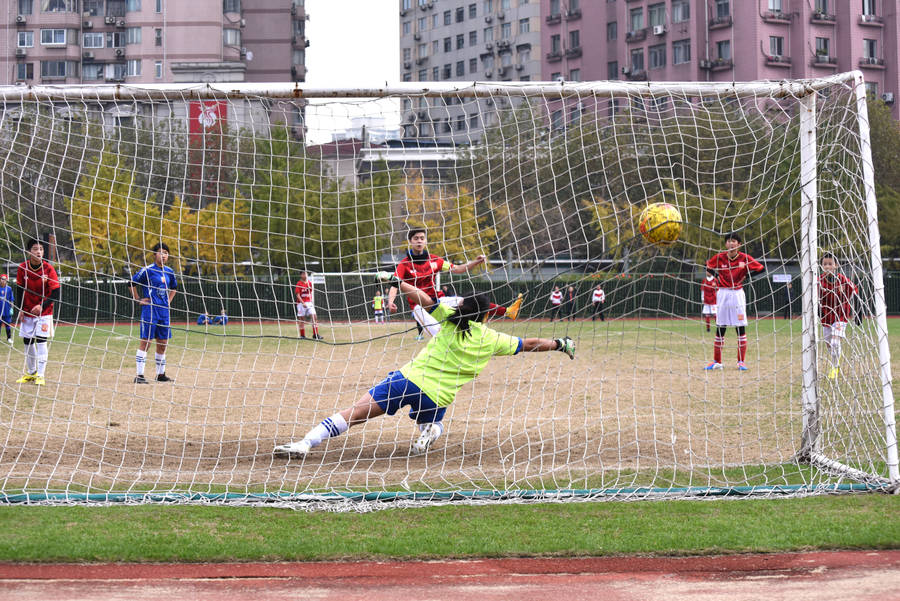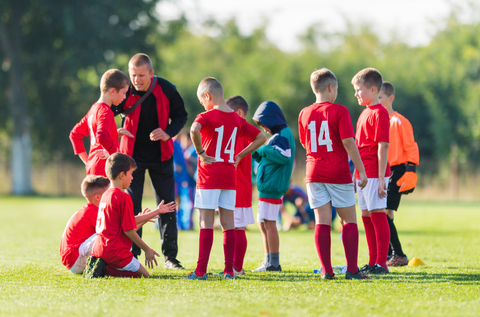
Is it just me or is the ‘politics’ of grassroots football getting worse? I'm sure it used to be the case that players played, coaches coached and parents supported from the sidelines. These days those lines of delineation seem to be blurred and lots of people like to come out of their lane.
I was recently told by a colleague of how they were challenged by a parent for asking their daughter to play in a certain position because her 1-2-1 coach believes she should be playing elsewhere.
I suppose every training session and match is made up of a complex web of relationships.
There are expectations and emotions that extend far beyond the pitch. The parents shouting their tactical instructions from the sidelines (sometimes in direct contrast to the coaches plan!), the young player glancing over to their coach for a sign of approval, the volunteer coach trying to balance individual development against team results, these interactions often form the foundations upon which grassroots football is built.
Communication represents the vital thread connecting every aspect of the grassroots football experience. When it flows effectively between coaches, players and parents, life tends to be calmer. Teams become more than a collection of individuals, players develop confidence alongside skills and parents transform from anxious observers into supporters. Yet when communication breaks down, as we all know it can do, the fall out can rip through the entire club, affecting player development, coach retention and overall enjoyment.
The current landscape of grassroots football presents communication challenges that weren't around 20 years ago. Social media has created a whole new level of transparency and scrutiny, whilst also providing platforms for misunderstandings to escalate rapidly. These days parents often bring professional workplace expectations to our volunteer run football clubs, creating friction when amateur organisations cannot match corporate communication standards. Meanwhile, today's players have grown up in digital environments where immediate feedback and constant connectivity are expected.
These generational and technological shifts have profound implications for how communication needs to and is evolving in grassroots football. Recent data reveals that 4.2 million people participated in football activities at least once a week in 2024, contributing to improved overall fitness and wellbeing, representing a massive community where effective communication can make or break individual experiences. Within this participation boom lies both a tremendous opportunity and a significant responsibility to ensure that every participant feels valued, understood and supported through clear, consistent communication.
The coach / player relationship forms the cornerstone of grassroots football communication, yet many coaches receive minimal training in how to communicate effectively with young people across different age groups. Effective communication in coaching involves using skills appropriately with players whatever their age and stage, requiring coaches to adapt their approach constantly. What engages and motivates a six year old differs dramatically from what inspires a sixteen year old, yet many of us have a one size fits all communication approach that fail to connect with diverse personalities and developmental stages.
Young players need communication that builds confidence whilst providing clear guidance for improvement. This involves celebrating effort alongside achievement, offering specific feedback rather than generic praise and creating environments where questions are welcomed rather than discouraged. Specificity helps players understand exactly what they're doing well and what to focus on next.
The timing of coach / player communication often proves to be crucial. Messages delivered during the heat of matches often fail to register with young players whose attention focuses entirely on immediate game situations. Post match discussions, when emotions have settled and players can reflect calmly, frequently prove more effective for delivering constructive feedback. Similarly, pre training conversations can set expectations and intentions that guide entire sessions.
Player to player communication represents another vital dimension often overlooked in our grassroots settings. Teams that communicate effectively on the pitch perform better than those relying solely on individual talent. Teaching young players how to call for the ball, offer solutions and encourage each other during difficult moments creates collective intelligence that elevates a team's performance. This peer communication often proves more influential than adult instruction, as young people naturally respond to guidance from teammates they respect.
The parent / coach relationship presents grassroots football's most complex communication challenge. We know that when the coach /parent relationship contains conflict or animosity, this can negatively affect the player, potentially causing them to leave the team or even the sport.
Most communication breakdowns between parents and coaches stem from expectations being misaligned rather than fundamental disagreements about player development. Parents might expect regular playing time for their child whilst coaches focus on squad rotation for development purposes. These different priorities create tension that can escalate into serious conflicts unless addressed through open, honest dialogue. When parents and other stakeholders are on the same page as coaches, coaching becomes much smoother as players won't hear conflicting messages from different people.
The introduction of formal structures can significantly improve parent / coach communication. Some clubs have established "cooling off" periods requiring 24 hours between matches and any parent communications, allowing emotions to settle before discussions begin. This simple measure prevents minor frustrations from escalating into major conflicts.
Technology has transformed communication possibilities whilst creating new challenges.
WhatsApp groups and other platforms enable instant communication with entire teams, but also create opportunities for misunderstandings to spread rapidly. Modern methods facilitate personalised communication with parents, allowing coaches to share individual development feedback and address specific concerns efficiently. However, digital communication lacks the nuance of face to face conversation, making tone and intent easily misinterpreted.
Creating a safe communication environment requires conscious effort from all adults involved in grassroots football. Players need assurance that honest feedback won't result in a backlash such as reduced playing time, that asking questions demonstrates engagement rather
than challenging authority and that their voices matter in their own development journey.
This psychological safety enables the open dialogue essential for meaningful learning and improvement.
The recent introduction of enhanced behaviour standards reflects growing recognition of communication's importance in grassroots football. A new Respect Standard was launched for the 2024-25 season, clearly setting out expectations of behaviours including Enjoy the Game, Give Respect, Be Inclusive, Work Together, and Play Safe. These principles provide communication frameworks that emphasise positive interaction and mutual respect amongst all participants.
The digital generation requires communication approaches that acknowledge young people's technological fluency whilst maintaining personal connection. Players comfortable with instant messaging and social media interaction might struggle with extended verbal feedback sessions. Conversely, those from families emphasising face to face communication might find digital only approaches impersonal and inadequate. Successful coaches blend communication methods, using technology to enhance rather than replace their personal interaction.
Effective communication is not about endless talking. It is about the right message, delivered in the right way, at the right time. It involves listening as much as speaking, observing body language, and understanding that each person whether they’re the coach, a player or a parent, brings their own pressures, hopes and insecurities into the football environment.
Communication becomes the bridge between these outlooks. When it is built with care and maintained with effort, it supports a culture of respect and development that is really healthy.
Grassroots football is ultimately a community, and like any community, it functions best when communication is open, respectful and appropriate.

















